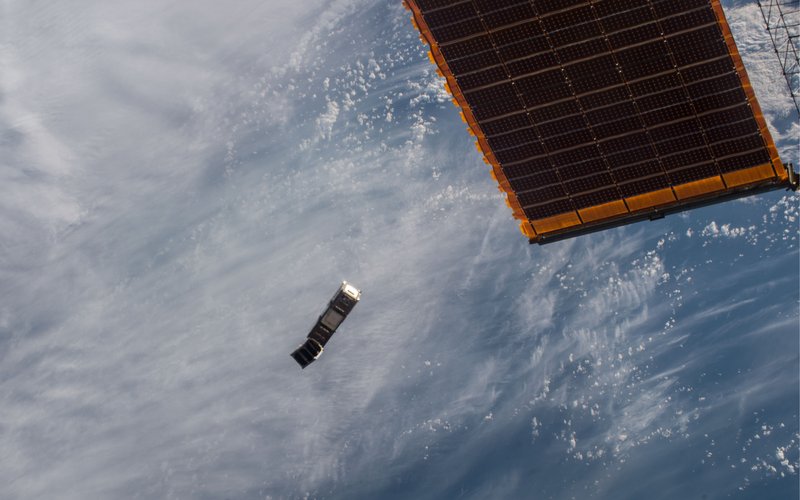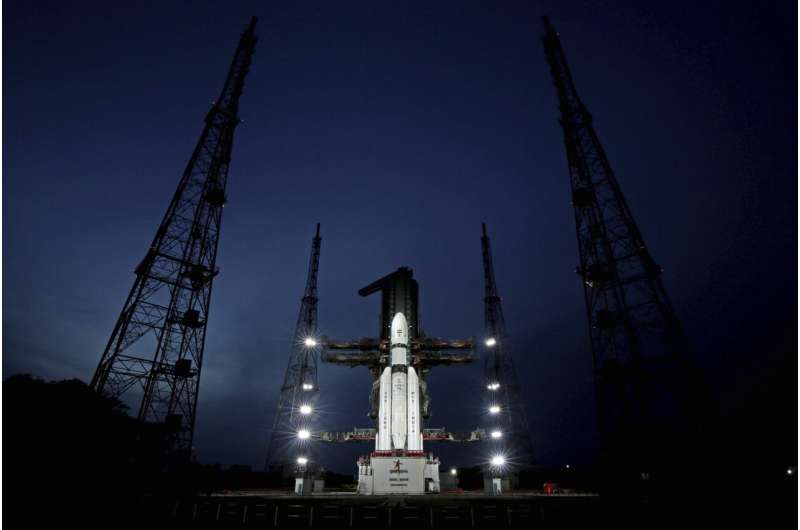
Copernical Team
The future, by the box: 10 years of ESA Technology CubeSats

Imagine building yourself a small satellite out of standardised 10-cm boxes. Such humble nanosatellites are called CubeSats, first devised as an educational tool but increasingly performing valuable work in space. ESA’s CubeSat Systems Unit has been utilising CubeSats for a decade now to test out innovative new technologies – resulting in seven missions to date with many more on the way.
Infographic: ESA Technology CubeSats, the first 10 years
 Image:
Infographic: ESA Technology CubeSats, the first 10 years
Image:
Infographic: ESA Technology CubeSats, the first 10 years India launches rocket to land spacecraft on Moon
 India on Friday launched a rocket seeking to land an unmanned spacecraft on the surface of the Moon, a live feed showed, its second attempt to become only the fourth country to do so.
The rocket lifted off from Sriharikota in the southern state of Andhra Pradesh carrying the Chandrayaan-3 spacecraft, as thousands of enthusiasts clapped and cheered.
The world's most populous nation has a
India on Friday launched a rocket seeking to land an unmanned spacecraft on the surface of the Moon, a live feed showed, its second attempt to become only the fourth country to do so.
The rocket lifted off from Sriharikota in the southern state of Andhra Pradesh carrying the Chandrayaan-3 spacecraft, as thousands of enthusiasts clapped and cheered.
The world's most populous nation has a ESA moves ahead with In-Orbit Servicing missions

Isn’t it strange that when satellites run out of fuel or a single component breaks down, we just discard them? ESA and European industry have joined forces to make sure that our satellites can live on.
Earth from Space: Ethiopian painting
 Image:
Reminiscent of an artist’s pallet, this striking false-colour image captured by the Copernicus Sentinel-2 mission features Lake Abbe in northeast Ethiopia.
Image:
Reminiscent of an artist’s pallet, this striking false-colour image captured by the Copernicus Sentinel-2 mission features Lake Abbe in northeast Ethiopia. Lunar solar power satellite
 Image:
Lunar solar power satellite
Image:
Lunar solar power satellite The sound of Aeolus will blow you away

After almost five years, ESA’s Aeolus wind satellite has completed its mission. Now, you can listen to the Life of Aeolus – an incredible wind orchestral piece that has been composed using data spanning Aeolus’ entire life in orbit around Earth.
India is set to launch a lander and rover to explore the moon's south pole

Astronomers identify the coldest star yet that emits radio waves
 Astronomers at the University of Sydney have shown that a small, faint star is the coldest on record to produce emission at radio wavelength.
The 'ultracool brown dwarf' examined in the study is a ball of gas simmering at about 425 degrees centigrade - cooler than a typical campfire - without burning nuclear fuel.
By contrast, the surface temperature of the Sun, a nuclear inferno, is
Astronomers at the University of Sydney have shown that a small, faint star is the coldest on record to produce emission at radio wavelength.
The 'ultracool brown dwarf' examined in the study is a ball of gas simmering at about 425 degrees centigrade - cooler than a typical campfire - without burning nuclear fuel.
By contrast, the surface temperature of the Sun, a nuclear inferno, is Astronomers find answers to mysterious action of ghost stars in our Galaxy
 A collaboration of scientists from The University of Manchester and the University of Hong Kong have found a source for the mysterious alignment of stars near the Galactic Centre.
The alignment of planetary nebulae was discovered ten years ago by a Manchester PhD student, Bryan Rees, but has remained unexplained.
New data obtained with the European Southern Observatory Very Large Tel
A collaboration of scientists from The University of Manchester and the University of Hong Kong have found a source for the mysterious alignment of stars near the Galactic Centre.
The alignment of planetary nebulae was discovered ten years ago by a Manchester PhD student, Bryan Rees, but has remained unexplained.
New data obtained with the European Southern Observatory Very Large Tel 
